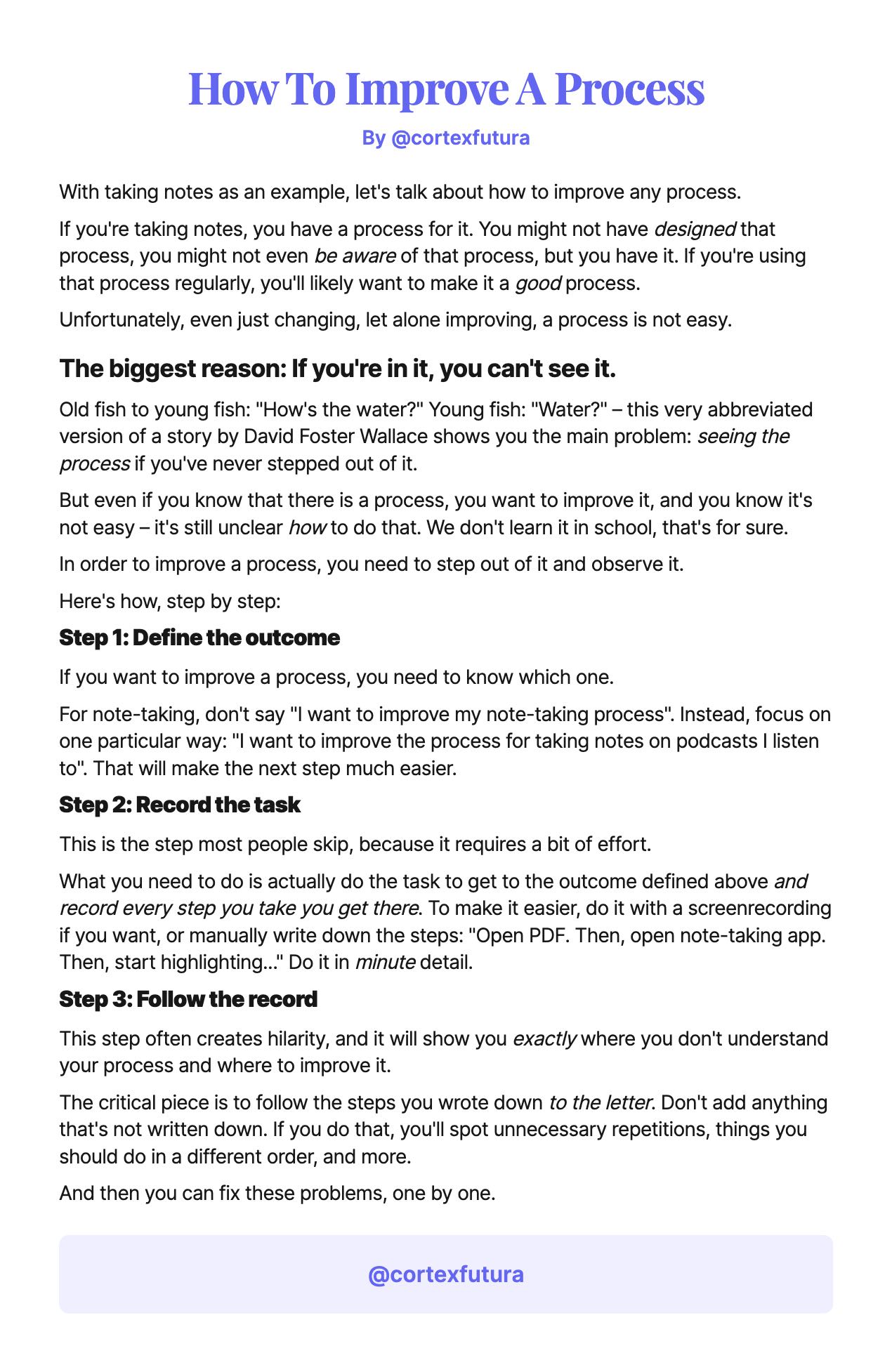Productivity
How to improve a process
With taking notes as an example, let's talk about how to improve any process.

With taking notes as an example, let's talk about how to improve any process.
If you're taking notes, you have a process for it. You might not have designed that process, you might not even be aware of that process, but you have it. If you're using that process regularly, you'll likely want to make it a good process.
Unfortunately, even just changing, let alone improving, a process is not easy.
The biggest reason: If you're in it, you can't see it.
Old fish to young fish: "How's the water?" Young fish: "Water?" – this very abbreviated version of a story by David Foster Wallace shows you the main problem: seeing the process if you've never stepped out of it.
But even if you know that there is a process, you want to improve it, and you know it's not easy – it's still unclear how to do that. We don't learn it in school, that's for sure.
In order to improve a process, you need to step out of it and observe it.
Here's how, step by step:
Step 1: Define the outcome
If you want to improve a process, you need to know which one.
For note-taking, don't say "I want to improve my note-taking process". Instead, focus on one particular way: "I want to improve the process for taking notes on podcasts I listen to". That will make the next step much easier.
Step 2: Record the task
This is the step most people skip, because it requires a bit of effort.
What you need to do is actually do the task to get to the outcome defined above and record every step you take you get there. To make it easier, do it with a screenrecording if you want, or manually write down the steps: "Open PDF. Then, open note-taking app. Then, start highlighting..." Do it in minute detail.
Step 3: Follow the record
This step often creates hilarity, and it will show you exactly where you don't understand your process and where to improve it.
The critical piece is to follow the steps you wrote down to the letter. Don't add anything that's not written down. If you do that, you'll spot unnecessary repetitions, things you should do in a different order, and more.
And then you can fix these problems, one by one.
Related Topics
Join the Cortex Futura Newsletter
Subscribe below to receive free weekly emails with my best new content, or follow me on Twitter or YouTube.
Join and receive my best ideas on reading, learning, and Knowledge Ops
